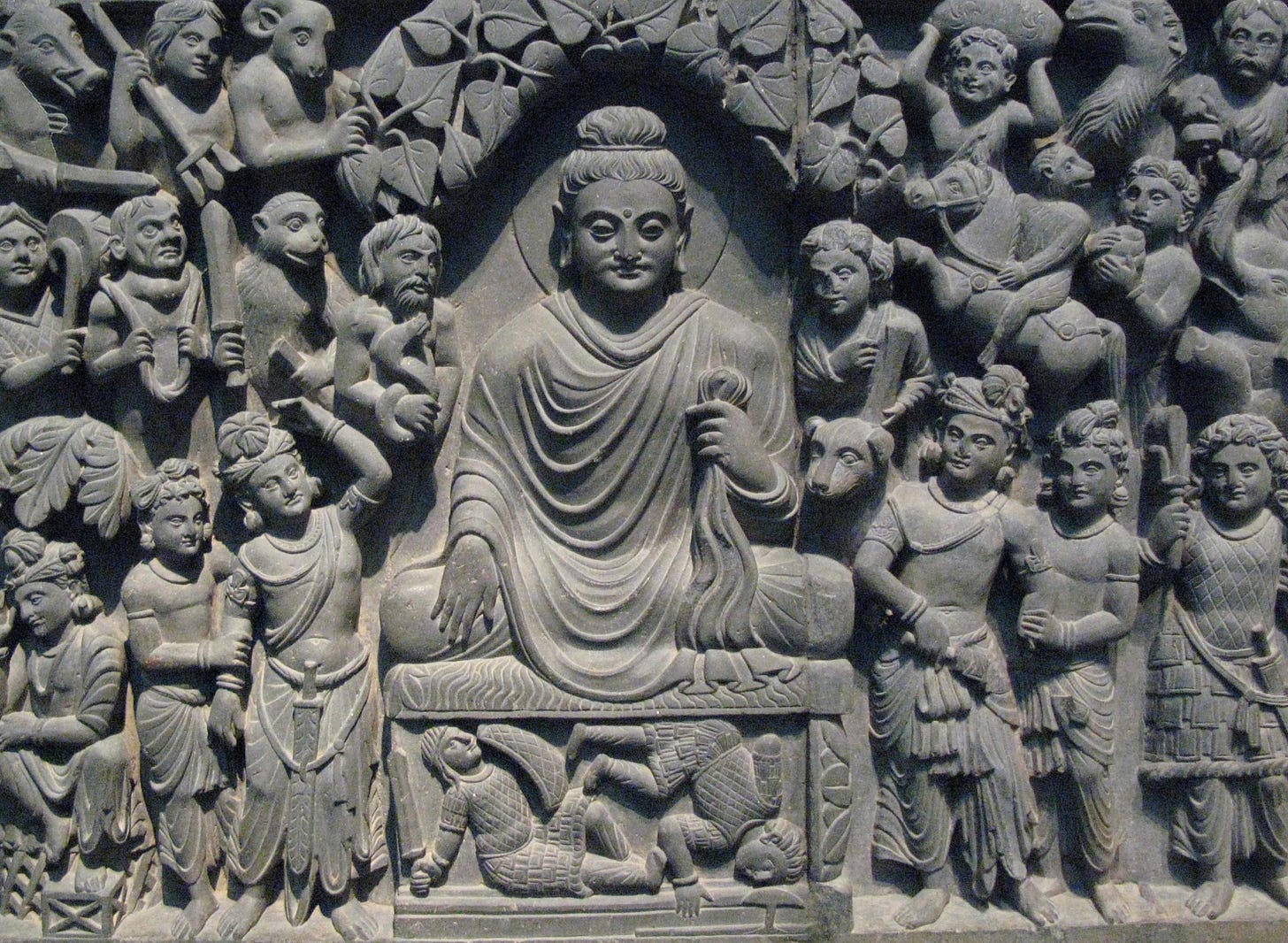In the Aṭṭhakanāgara Sutta of the Majjhima Nikāya (MN 52), we find a deep and stirring conversation between the devoted householder Dasama and the venerable Ananda, the Buddha’s cousin and close attendant. What unfolds is a masterclass in the Buddha's meditation instructions, particularly on the role of deep concentration (jhana) as the “single quality” that leads to awakening. And yet, as with much of the Dhamma, this “one” quality opens the door to many—eleven, to be exact.
One Question, Eleven Doors
The scene begins in a familiar fashion. A lay practitioner, Dasama of Aṭṭhakanāgara, eager to deepen his understanding, seeks out Venerable Ananda. The question he poses is direct and profound: Is there one single quality that can bring about the final release of a dedicated Dhamma practitioner?
Ananda’s answer is equally direct: jhana the meditative absorptions characterized by profound stillness and unwavering awareness.
But let us pause here. Too often, jhana is misunderstood, either dismissed as inaccessible or conflated with mere relaxation. Yet in this discourse, we are reminded that the four jhanas are not ends in themselves but a process of letting go, layer by layer, fabrication by fabrication.
Four Jhanas: A Path of Letting Go
Ananda describes each of the four jhanas not just as meditative states, but as opportunities for wisdom and dispassion:
First Jhana: Born of seclusion, flavored by rapture and directed thought.
Second Jhana: Deepening tranquility, free from thought, soaked in joy.
Third Jhana: Rapture fades, replaced by equanimity—a still, pleasant abiding.
Fourth Jhana: Equanimity purified, neither pleasure nor pain, just bright awareness.
Each jhana, while increasingly subtle, is recognized by the practitioner as fabricated, impermanent, and subject to cessation. The goal is not clinging to peace but seeing through even the subtlest formations.
Keep reading with a 7-day free trial
Subscribe to The Gentle Law to keep reading this post and get 7 days of free access to the full post archives.





